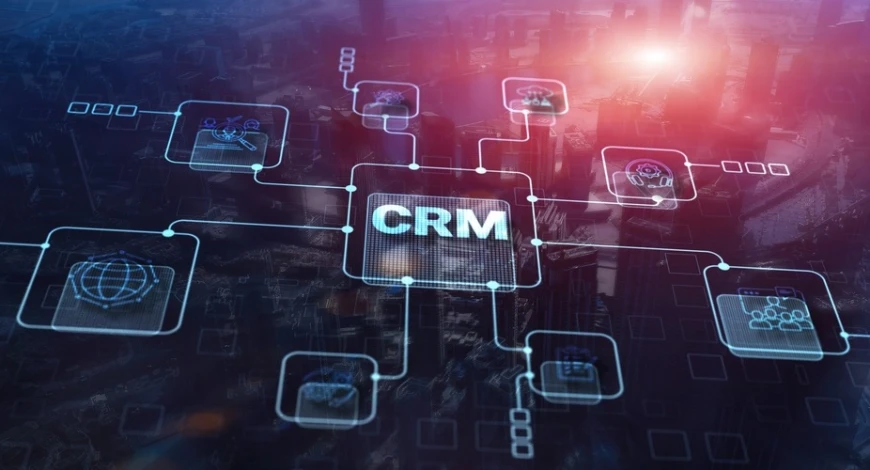Omnichannel Growth in E-commerce Design and Mobile App
Ecommerce design and mobile app experience are not merely a shopfront in today’s omnichannel growth goals; they form a holistic architecture that spans from product discovery to checkout optimization, from personalized customer experience (CX) to logistics and returns processes. When brands establish a consistent experience across web, mobile app, in-store kiosks, marketplaces, and social commerce channels, they reduce acquisition costs, increase LTV/CLV, and achieve sustainable growth. In this comprehensive article, we cover every critical component of an omnichannel strategy end to end: headless commerce architecture, PWA, Core Web Vitals, user research, merchandising, search and recommendation engines, A/B testing culture, BNPL (installments/buy now pay later), push notifications, SMS, WhatsApp, loyalty, and retention loops.
1) Omnichannel Strategy: One Customer, One Catalog, One Order View
The heart of multichannel growth is cross-channel unified inventory, pricing, promotions, and order orchestration. A customer should be able to add a product to the cart in the mobile app and complete it on the web, use in-store click & collect, and experience the same quality in the returns process across all touchpoints. Achieving this integrity requires CDP (Customer Data Platform) and CRM integrations, an event-driven architecture, and real-time synchronization.
Key deliverables
- Unified customer profile (unified ID) and a first-party data strategy
- Store/online inventory synchronization and price/parity control
- Cross-channel promotion rule engine and coupon portability
- Order Management (OMS) and RTS/RTP (ship-from-store/pickup) capability
2) Information Architecture and UX: Frictionless Flow from Discovery to Cart
A successful ecommerce experience is shaped around product discovery, filtering, comparison, and rapid decision-making. Category/collection design, facet filters, autocomplete, booster merchandising (stock, margin, trend), the Product Detail Page (PDP), and the checkout flow should be optimized based on usability research.
Actionable principles
- Mobile-first grids and thumb-zone optimization
- Clear value proposition, trust badges, transparency in delivery/returns
- Quick filters, scrollable chip patterns, sticky add-to-cart
- Micro-interactions, skeleton screens, and perceived performance
3) Headless, PWA, and Performance: Speed = Revenue
The headless commerce approach increases flexibility by decoupling domains such as content (headless CMS), cart/payments, catalog, and search. With PWA, capabilities like offline experiences, home-screen install, push notifications, and background sync contribute to revenue conversion. Core Web Vitals (LCP, INP, CLS) and CDN/edge caching reduce initial load time and raise the conversion rate.
Technical checklist
- SSR/SSG strategy, image optimization, and lazy-loading
- Critical CSS, HTTP/2 push, prefetch/prerender
- Service Worker, background fetch, offline cart
- Real-device testing and RUM (real user monitoring)
4) Search, Recommendations, and Merchandising: Turn Discovery into Revenue
In ecommerce, on-site search is the strongest signal of “intent.” Semantic search, typo tolerance, synonym dictionaries, and personalization (history, location, segment) boost conversion. In the recommendation engine, bestsellers, “bought together,” upsell/cross-sell, and dynamic banners increase the average basket value.
Measurement metrics
- Search zero-result rate and “refine” behaviors
- Recommendation click-through rate and add-to-cart-through-recs
- View-to-purchase rate by category
- Merchandising rule impact: stock, margin, seasonality
5) Checkout and Payments: Maximize Trust and Speed
Simplifying the checkout flow (guest checkout, one-page), trust signals (3D Secure, SSL, return guarantee), BNPL, cash on delivery, wallet and installment options increase conversion. Address autocomplete, delivery-time selection, and transparent shipping fees reduce abandonment.
Improvement ideas
- Guest checkout and one-tap payment
- Reducing form fields, error prevention, and inline validation
- Card on file, tokenization, and a secure vault
- Checkout A/B tests and abandoned-cart automation
6) Mobile App Growth: Acquisition, Activation, Retention
The app is the locomotive of loyalty and repeat purchases in omnichannel growth. App Store Optimization (ASO), referrals, deeplinks/universal links, push/in-app messaging, SMS, and WhatsApp automations should be designed on a cohort basis.
Growth loops
- Onboarding tours, personalized promotions, first-purchase triggers
- Lifecycle campaigns: winback, replenishment, birthdays
- Location-based notifications and in-store QR flows
- Loyalty tiers, points/badges, and early access
7) Social and Marketplaces: From Content to Conversion
TikTok Shop, Instagram storefronts, YouTube live shopping, and marketplaces are growth levers. Content, UGC (user-generated content), and influencer collaborations should be measured with attribution modeling; maintain SKU, price, and stock parity.
Operational requirements
- Omnichannel feed management and rich media (image/video)
- Dynamic pricing/couponing and a promo calendar
- Order consolidation and unified returns/exchanges management
- Seller performance metrics and SLA/OLA (service levels)
8) Logistics, Returns, and Customer Service: Operations that Build Trust
A multichannel customer experience is completed with shipment tracking, on-time delivery, easy returns, and multichannel support (phone, chat, social, store). WMS and OMS integrations, RTS/RTP capability, accelerate the returns/resale loop.
Metrics to track
- OTIF (on-time in-full) and first-attempt delivery rate
- Return rate and return recovery rate
- CSAT, NPS, first contact resolution
- Cost per support contact and self-service rate
9) Data, Measurement, and Experimentation Culture: A Learning Organization
To sustain growth, an analytics and experimentation culture is essential. Server-side tagging, tracking resilient to cookie restrictions, cohort and RFM segmentation, marketing mix modeling, and incrementality tests manage budgets efficiently.
Methodology
- North Star metric and supporting behavioral metrics
- Always-on A/B testing, Bayesian analysis, and an experimentation platform
- Product/channel LTV:CAC ratio and payback period
- Churn prediction and next best action automation
10) SEO and Content: Intent, Speed, Relevance
In SEO, information architecture, schema (product, review, FAQ), CWV, and page depth are critical. On PDPs, rich content, FAQ, and UGC reviews; on category pages, SEO copy and filtered URL optimization (canonical/parameter management) are required.
Checklist
- Clean URL structure, breadcrumbs, and internal linking
- Hreflang, i18n, and a multilingual content strategy
- In image search, alt text and WebP/AVIF
- Topic cluster approach in blog/guide content
11) Trust, Accessibility, and Ethical Design
Trust is the foundation of conversion. Accessibility (a11y) standards, color contrast, keyboard navigation, screen reader compatibility, and ethical consent/notification design (cookie/tracking preferences) strengthen brand equity.
Good practices
- Transparent data use and KVKK/GDPR compliance
- Clear language and recovery paths in error states
- Decision-support content: size guides, fit tables, measurements
- A visual language that enhances social inclusion
12) Organization and Product Processes: Structure for Speed
Omnichannel growth requires harmony among product management, merchandising, marketing, data, and operations teams. Roadmaps are hypothesis-driven; continuous delivery runs with Kanban/Scrum rhythms.
Building blocks
- Capability-based teams with clear OKRs
- Internal developer platform and a design system
- Experimentation platform and centralized analytics
- Procurement/sourcing and a supplier scorecard
13) Internationalization and Localization
When entering new markets, pricing, language, currency, taxation, shipping, and returns policies must be localized. With hreflang, multi-catalog, and multi-warehouse, delivery times improve.
Practical steps
- Multi-price, multi-tax checkout rules
- Regional content and SEO keyword mapping
- Local payment methods and BNPL
- Multichannel return points
14) The B2B Ecommerce Dimension
For B2B customers, you need contracted pricing, quote approvals, credit limits, and bulk-order flows. Self-service portals and punchout integrations accelerate order automation with EDI.
Key capabilities
- Catalog masking/role-based visibility
- Price lists, discount rules, and payment terms
- Bulk uploads and re-order lists
- Split shipments and backorder management
15) Roadmap: 90/180/360 Days
0–90 Days: Foundations
- PWA and CWV improvements, simplified checkout
- Search/recommendation foundations and merchandising rules
- ASO, initial push automations, and onboarding
- CDP/CRM base segmentation and abandoned cart
90–180 Days: Maturation
- Headless modules, offline cart via Service Worker
- Dynamic promotion engine and pricing experiments
- App campaigns with deeplinks and winback flows
- RTS/RTP pilots in logistics and returns automation
180–360 Days: Scale
- ML-based personalization, next best action, MMM modeling
- Internationalization, multi-tax/currency, and hreflang
- Loyalty constructs and gamification in the app
- Marketplace & social live-shopping integrations
Ecommerce design and omnichannel growth on mobile are a refined balance of speed/experience/trust. Headless flexibility, PWA performance, search/recommendation intelligence, reducing checkout friction, and app-driven retention loops increase LTV while lowering acquisition costs. With a disciplined A/B testing and analytics culture, you can build a compounding growth machine that improves every sprint over the last.
-
 Gürkan Türkaslan
Gürkan Türkaslan
- 11 October 2025, 12:26:16
 English
English



